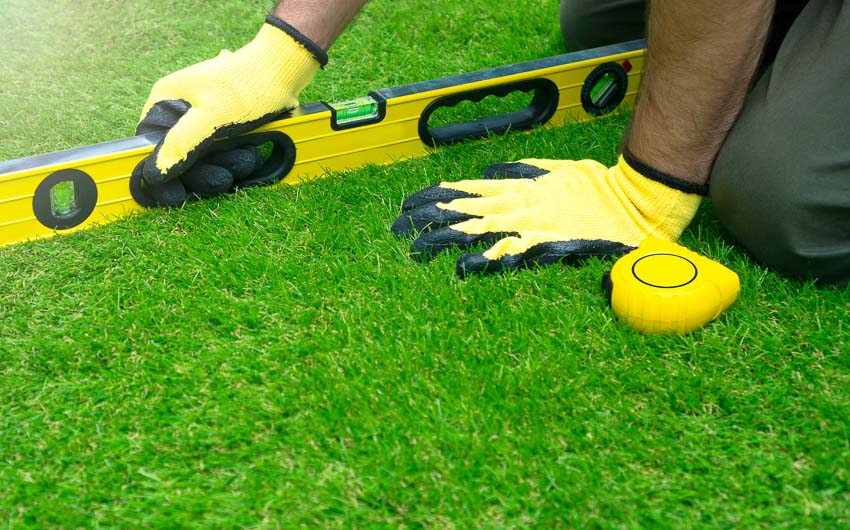One of the main characteristics of a perfect lawn is a level and even surface. In this comprehensive guide, you’ll learn the best way to level an uneven lawn to enjoy the many benefits of a smooth, beautiful lawn.
Introduction
Why is having a level lawn important, and how do you level an extremely unlevel lawn? Find the answers to your DIY lawn leveling questions and learn more about the benefits of a level lawn.
Understanding the Importance of a Level Lawn
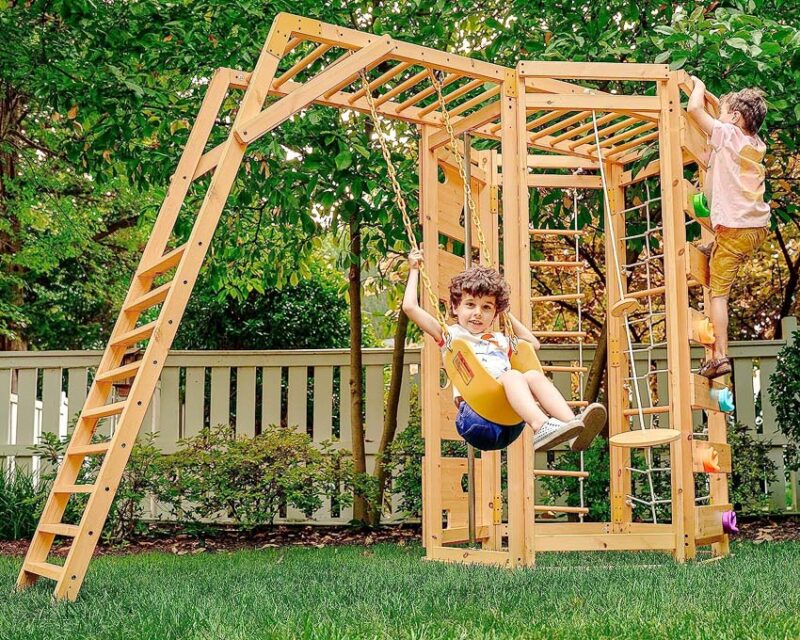
If you have an uneven lawn, you’re missing out on some of the most important benefits a lawn offers. Lawns are integral outdoor spaces where your family gathers and plays. A level lawn looks better and is better for activities and entertainment.
Benefits of a Well-Leveled Lawn
There are many benefits to having a well-leveled lawn. Consider the following reasons to pursue a more even lawn.
Easier to Mow and Maintain
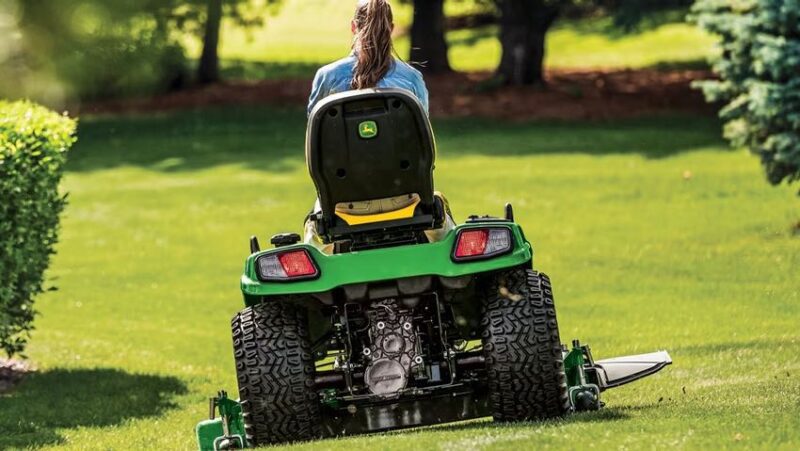
If you’re scalping your lawn when you mow, it’s probably because it’s uneven in some places. Scalping your lawn is hard on your grass and your mower, especially the blades.
Improved Aesthetics
If your lawn is bumpy and uneven, it probably has bare patches caused by scalping and standing water issues. Leveling your lawn takes care of these issues so you can enjoy a lush green expanse of grass that adds to your home’s curb appeal.
Safer
Uneven lawns present tripping hazards, which are more likely to affect children and elderly people in your family. Slips and falls are a significant danger, causing millions of people to go to the emergency room each year.
Healthier Lawn
A level lawn is easier to mow and maintain, so it will naturally be healthier. It will also be less prone to drought and weeds.
Improved Drainage
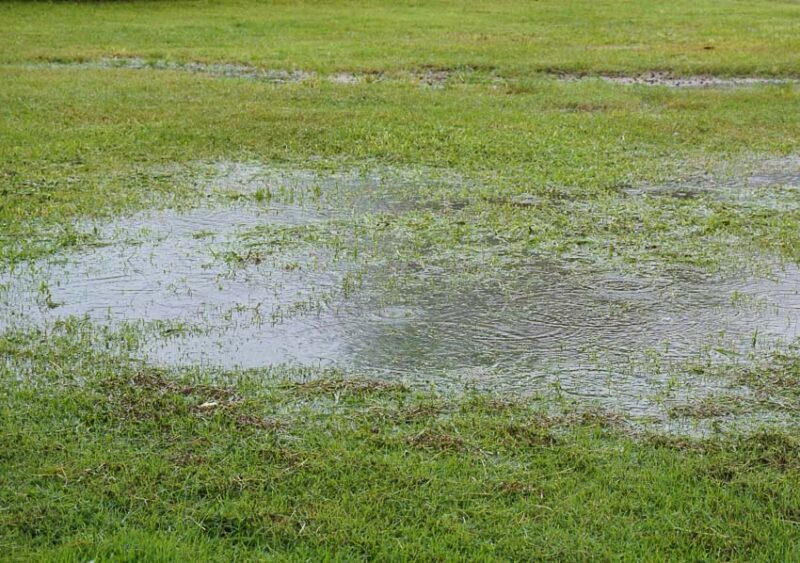
Another critical factor is drainage. Standing water can cause significant problems in your yard, and lawns are important to your yard’s erosion control and stormwater drainage system.
Assessing Your Lawn’s Unevenness
Before you tackle the unevenness of your lawn, take some time to assess it. Learn more about how to recognize the issues related to uneven lawns and how to identify low and high points.
Recognizing Uneven Lawn Issues
The most common issue related to uneven lawns is high and low areas that lead to scalping when you mow, but many other lawn problems can be traced back to its unevenness.
Here are some common examples:
- Discolored patches of grass
- Thin patches of grass
- Scalped areas
- Weeds and fungal patches
- Puddles in low areas
- Visible soil erosion
Identifying Low Spots and High Points
It’s easy to identify the low spots in the middle of a hot summer because these areas are usually greener, while the high spots turn brown. You can feel them when you walk across the surface of your lawn, and they become even more apparent when you mow.
Various problems can cause high and low spots in your lawn. There may be small holes and divots or large depressions in your yard that you need to level.
You can use a number of tools to identify the low spots and high points in your yard, including a line level, laser level, or even a 2×4 plank. You might be surprised how uneven your lawn is once you start looking for areas that aren’t level.
Common Causes of Uneven Lawns
It’s normal for the ground in your yard to shift over time, resulting in an uneven lawn. However, there is a wide range of causes for uneven lawns, some of which need to be addressed before you put a lot of energy into fixing your yard.
Pets
Dogs are well-known for their love of digging, and your furry friends could be the main culprit for your uneven lawn. Before you level your lawn, check out some dog-friendly landscaping ideas that you can use to minimize the effects your pooch has on your lawn.
Wildlife

Small animals like gophers, voles, and moles can take a toll on your lawn. And this makes knowing the best way to level an uneven lawn important. You’ll need to find effective methods to get rid of these pests, or your lawn-leveling efforts will be in vain.
Other animals, like skunks and raccoons, cause damage to your lawn by digging for grubs. Learn how to get rid of grubs in your lawn to put a stop to this annoying issue.
Irrigation System and Watering Problems
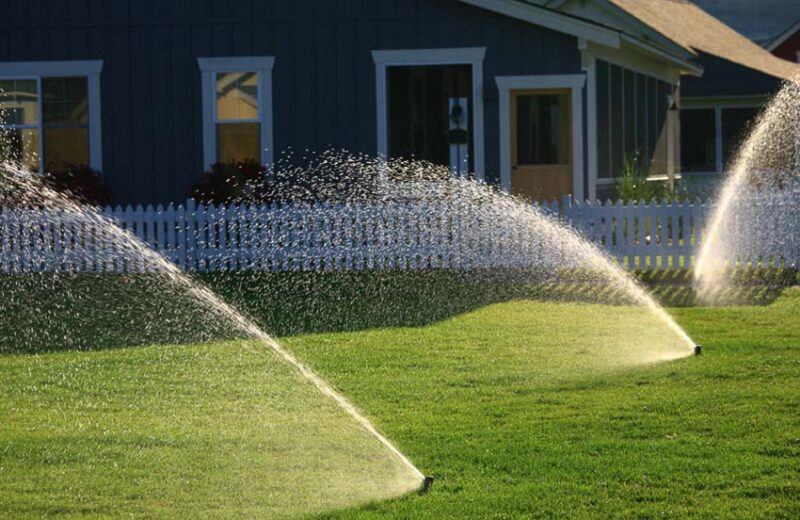
The settling that occurs after an irrigation system is installed is a common reason for an uneven lawn. You could also have ongoing issues if your watering system isn’t set up properly or if you have broken pipes causing soil erosion beneath the surface.
Overwatering is another issue that causes erosion which leads to uneven lawn areas. Overwatering is much more common than most people realize.
Other Common Causes of an Uneven Lawn
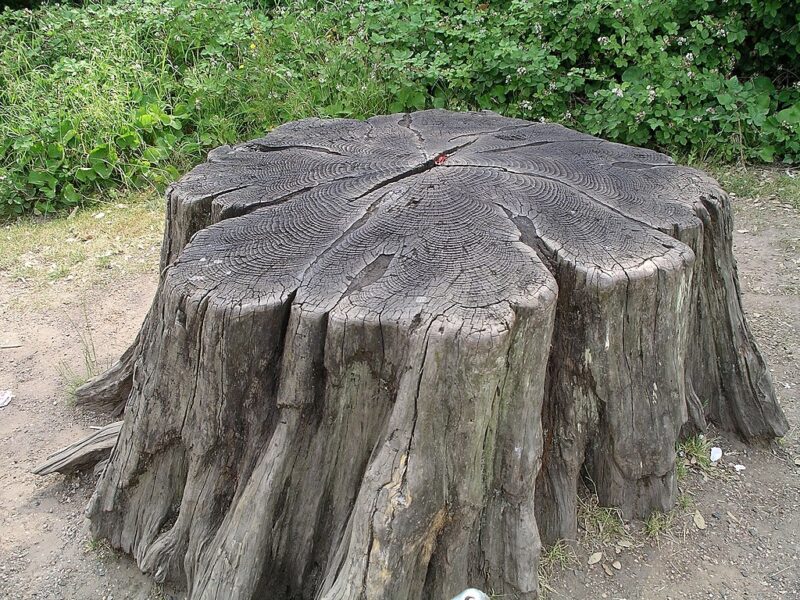
- Foot traffic
- Vehicle traffic
- Erosion caused by poor drainage
- Stump removal
- Tree roots
- Freeze and thaw cycles
- Children digging
- Poor lawn maintenance practices
When the ground is wet, it is more susceptible to problems caused by vehicles and foot traffic. Avoid walking on your lawn in the spring after the snow thaws or when it rains heavily.
Tools Needed for the Job
Homeowners can easily address most lawn issues with the right tools and equipment. You’re ready to level your lawn once you’ve identified the uneven areas and addressed the causes.
Essential Tools for Lawn Leveling
Having the right tools and materials makes any job more manageable. Here’s what you’ll need to level your lawn:
- Wheelbarrow
- Shovel
- Rake , including a lawn leveling rake
- Laser level or line level
- Lawn roller
- Lawn dethatcher
- Compost
- Fine sand
- Tarp
- Grass seed
Rakes, Shovels, and Wheelbarrows
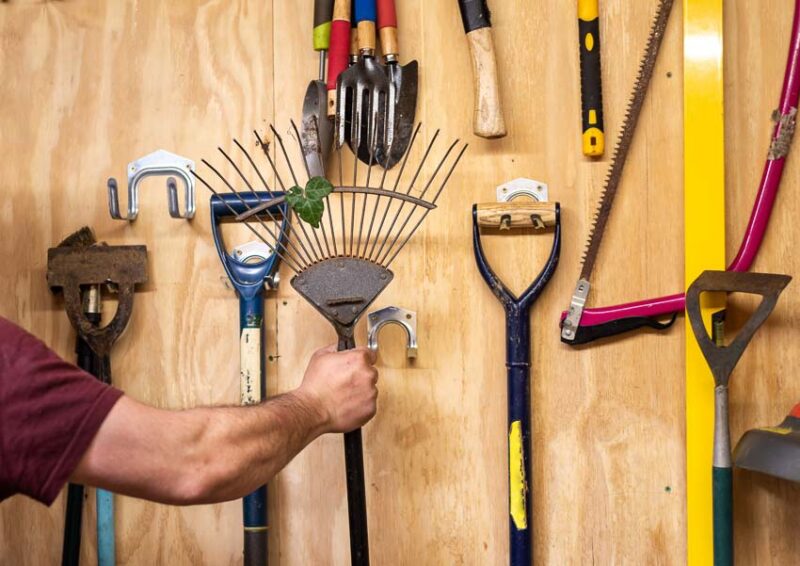
Maintaining a beautiful yard starts with simple tools like a rake, shovel, and wheelbarrow. There are many different types of rakes, including hard rakes, leaf rakes, dethatching rakes, and lawn leveling rakes.
A good-pointed shovel and a heavy-duty contractor wheelbarrow represent a small investment and will be useful in many lawn care duties.
Lawn Roller or Water-Filled Drum Roller
Lawn rollers, made from steel or polyurethane, are filled with water or sand to make them heavy. They are rolled on lawns to compact the soil and smooth out uneven patches.
Lawn rollers range in price from about $70 to $700, but you can also rent one at your local rental or home improvement store.
Topsoil and Compost
How much topsoil or compost you need depends on how uneven your lawn is. You may need to purchase a truckload of topsoil for severely uneven yards that need re-grading.
For moderately uneven lawns, throw a tarp down on the ground and mix up a few wheelbarrow loads of leveling mix.
- If you have heavy clay soil, use a mix of sand and compost, which will improve your lawn’s drainage.
- For sandy or loam soils, use a mix of topsoil and compost. The compost provides extra nutrients that your grass needs for lush growth.
String Level or Laser Level
A laser level is the best tool for leveling your lawn, and you won’t regret purchasing one if you’re an avid DIYer because they have many other uses. Otherwise, use string, a line level, and stakes to assist you with achieving a perfectly level grade.
DIY Lawn Leveling Techniques
You can fill low spots with leveling mix for a mildly or moderately uneven lawn. However, if your lawn is severely uneven, you’ll have to do much more work.
Lawn leveling is a tough DIY job, but it doesn’t require extensive skills. Follow these steps for the best results when re-grading your lawn.
1. Removing Sod and Vegetation
Start by removing the sod and vegetation. If your sod is in good condition, you can rent a sod cutter, roll it up, and store it for reuse. Otherwise, you can till it or dig it out by hand. If you’re using a tiller, choose a heavy-duty rear-tine model.
2. Dealing with High Points
Set up your string or laser level. Start by taking care of the high points, and use the extra dirt to fill the low spots.
3. Filling Low Spots
Fill in any remaining low spots with topsoil. Ensure that there is good drainage away from your house. The ground should drop one inch per foot for the first ten feet around your home’s foundation.
4. Using a Lawn Roller
Roll out the soil on the entire area, going up and down to create a uniform level ground. As you compress the soil into place, you may need to add topsoil to some areas as you go.
5. Planting Your Lawn
You are ready to plant your lawn after rolling the soil flat and compacting it. You can use sod, plugs, or seeds. New lawns require a lot of attention during the first days and weeks and won’t be ready to mow for at least a month. Avoid using your lawn until it is well established.
Hiring a Professional vs. DIY Approach
DIY leveling of an uneven lawn may be the best way for some people to achieve professional results. However, since re-grading your lawn can be a significant challenge, many people hire a lawn leveling service.
Pros and Cons of Doing It Yourself
DIY lawn leveling has the following advantages:
- You can customize your lawn shape and size exactly how you want it.
- Physical labor is good exercise.
- DIY projects are good for your mental health.
- You can work at your own pace.
On the downside, DIY projects of this magnitude can be time-consuming and require several days of hard work. It also requires the right tools, which you may still need to get.
Cost Savings and Personal Satisfaction
The average cost to level a lawn is about $1.40 per square foot, so you can save several thousands of dollars by doing it yourself.
Personal satisfaction is another important consideration when it comes to home and garden care. Working with your hands is comforting and helps you disconnect from your electronic devices.
You will also experience a sense of accomplishment and self-reliance, which can boost your self-esteem. It’s a great way to bond with family members if you work on the project together.
Time and Physical Effort Considerations
Only some people have the time for an extensive DIY project like lawn leveling, so many people hire a lawn leveling service. It’s also physically demanding work, which may not be right for you.
Always consider the scope of your project when determining if you have the time and physical capabilities. Leveling a few depressions won’t be a problem for most people, but re-grading an entire yard is harder.
FAQs: Common Questions About Lawn Leveling
1. Can I level my lawn without professional help?
Many people can level their own lawns without professional help. The size of your yard, your physical capabilities, and how uneven your lawn is will determine whether it is a suitable DIY project for you.
2. How long does the DIY lawn leveling process usually take?
The length of time it takes to level a lawn depends on the scope of the project and the size of your yard. DIY lawn leveling usually takes about 5 to 7 days for extensive projects.
3. What’s the optimal time of year to level a lawn?
The best time of year to level your lawn depends on where you live. If you’re regrading your yard and replanting a new lawn, choose the best time to plant grass for your area.
4. Will leveling my lawn solve the drainage issues I’m facing?
Leveling your lawn will help solve the drainage issues in your yard. If you face problems like standing water or puddles in your lawn, creating a positive slope away from your home’s foundation will fix many problems. Adding a layer of compost over the top of your lawn will also improve drainage.
5. Can I seed or sod immediately after leveling the lawn?
For best results, you should compact the soil in your yard with a lawn roller before reseeding or planting sod. This helps keep the soil in place and removes air pockets that can lead to an uneven surface later on.

